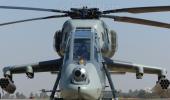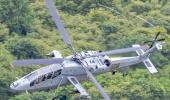'Just because of my background and poor academic qualifications, most people disbelieve what I have done.'
Pradip Shivaji Mohite, a Class 9 dropout who has built 9 helicopter models, speaks to IAF Veteran Air Commodore Nitin Sathe.
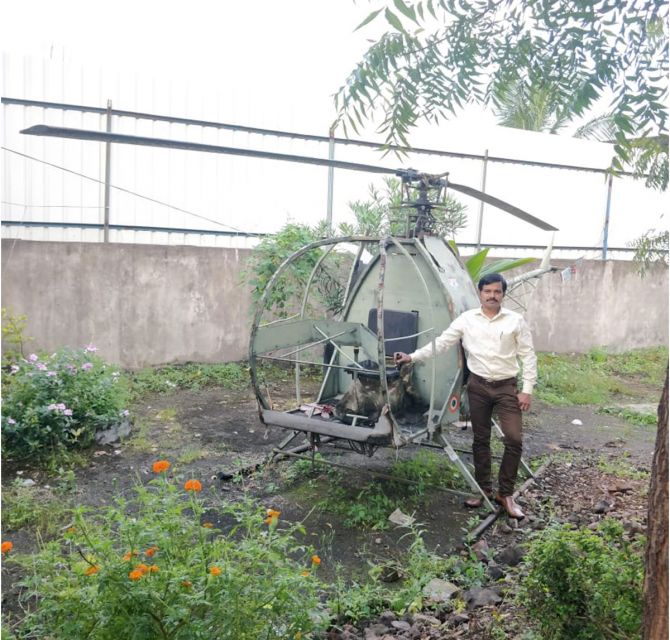
The day is almost breaking when we leave Pune -- my friend Sanjay and I -- on what will turn out to be an invigorating and exciting day.
The small village of Vangi -- about 180 km away from Pune -- is difficult to find even on Google maps, but we have been briefed well for the navigation by our host, Pradip Shivaji Mohite, who lives with his family in the village.
My friend Air Commodore Sanjay Kunte, an Indian Air Force veteran who now is a test pilot at the Hindustan Aeronautics Limited, Bengaluru, briefs me on who we are going to meet. We have had a long association of flying helicopters in the IAF.
We get talking as the journey gets going.
"This man is quite something," says Sanjay. "He has designed a helicopter prototype all by himself; and not one, but as many as 9 working models in the past few years!"
"Is he an engineer?" I ask, intrigued. "Na! na! I think he hasn't even passed his high school... but he is brilliant as you will see soon."
How can one have the concepts of aerodynamics and understand structures and all the technical stuff that goes into making the most difficult machine that flies, I wonder.
"He must have brought the parts from a kabadi (scrap shop) and assembled it." I muse aloud, still not willing to believe this story.
"Let us go and hear it from the man himself in a couple of hours!" Sanjay responds as we whiz along the highway south towards Satara.

When two aviators meet, all they can talk about endlessly is about flying and all matters related to flying. That's just what happens and time flies as we discuss old times and new.
We are soon negotiating the small lanes at our destination village trying to find our way.
If he is a genuine guy, I bet he is a perfect example of Atmanirbharta, I think as Sanjay goes to ask for directions..
The helicopter is a highly unstable machine and very difficult to design, let alone build. It has a million rotating parts, vibrates a lot and has poor structural integrity.
It takes professional outfits many years to design and fly one model -- and here is a guy who had built nine of them! I am itching to interact with this wonder man and lay my doubts to rest.
Everyone in Vangi seem to know the helicopter man, and we are soon directed to the small entrance to his two room home.
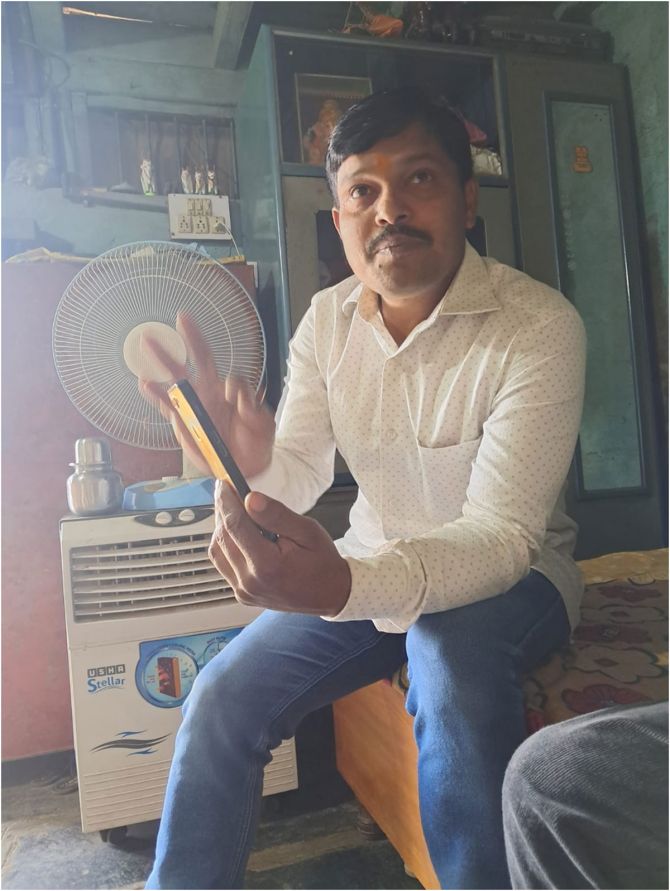
As we are ushered in, we are introduced to his father, a heavy machine mechanic who has been confined to his home by a paralytic stroke. His elder brother looks after a small piece of land where they grow sugarcane which sustains the family.
Pradip's wife remains behind the curtain, supplying us cups of sweet tea and Poha from the kitchen as we get talking.
His two children potter around, playing silently. As we give them some gifts that we have got along, they promptly come and touch our feet.
I get talking to Pradip Shivaji Mohite.
Why a helicopter? Why not anything else?
I have been fascinated by the helicopter ever since I was a child. I often saw political bigwigs come in them and land near our village during elections.
Fascinated, I used to go the nearest dispensary and get old syringes and glass tubes to make small models that looked like those real ones.
Over time, I have self-learnt the concepts of everything mechanical and can fabricate what you tell me to; but I will not make anything else except my own helicopter!
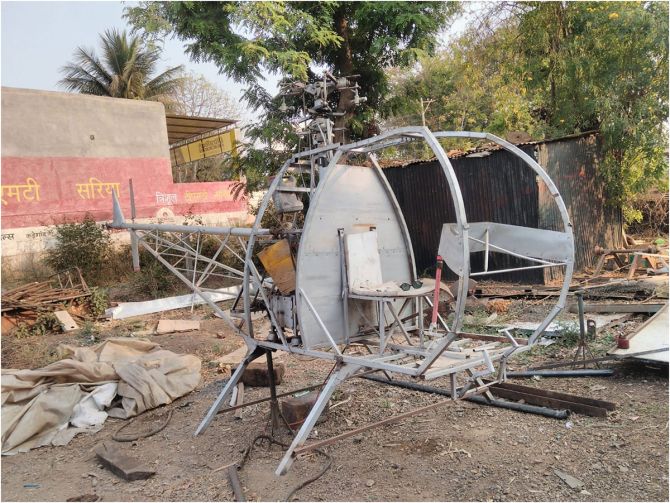
Tell me a little about your schooling and occupation thereafter.
I went to our local village school and dropped out after Class 9. Having learnt about engines seeing my father work on them, I decided to open a garage to make one for my helicopter; earning some money on the side by repairing vehicles.
I do not want to get spare parts or kits which are readily available and 'assemble' an engine, but I would rather design and make one myself since I know what exactly is needed for my model.
As and when I get some idle time at my garage, I sit down and design the various parts of my engine and helicopter on paper.
After calculating all the angles and measurements, I have to make the people at the fabricating unit understand my requirements in three dimensions.
Most of the time, they don't do so, and ask me to work on their lathes and other machines myself.
You see, the tolerances that I need are in the region of less than 15 microns which requires precision to build.
I don't know why, but just because of my background and poor academic qualifications, most people disbelieve what I have done. It takes a lot of convincing to make them understand my genuineness.
Therefore, I am now planning to give my 10th standard exams and also appear for the 12th boards. I have realised that the stamp of being formally 'educated' is necessary to survive!

It is not easy to fabricate parts. I set for myself deadlines, and often have to go without sleep to get things ready in time.
Making parts like the crankshaft requires high skills and precision. I have now learnt to use some software programmes that allow me to draw the precise diagrams required at the factory. Earlier, I used to draw the same on paper but now I have mastered the software which is good for me.
As for the raw material, we source it from the best manufacturers who make military grade metal bars which are then made into parts. For example, for the crankshaft, what was left of a metal bar of 200 kg was just about 20 kg after we cut through it.
If it can't be done precisely or the angles go wrong, it is a terrible waste of time and money. So I personally supervise the process and also work myself on the lathe machines when I can.
What about funding?
You see this home of mine? That is all what we own besides the 4 acres of farmland. I also have a small plot I have bought to make my new garage.
Things are tight monetarily, and raw materials and fabrication cost a lot. I have managed thus far thanks to partnering with an industrialist and I pray to god to help me in future too.
This industrialist is a local man who has a lot of businesses and therefore big money, and he got interested in what I was doing. He offered me a partnership stake and also a monthly income as well as his factory premises to build the helicopter.
Initially he wanted to import the engine and other critical components, but I managed to convince him that I would be able to do all that myself at much lesser cost. He, therefore, funded the project with almost a crore of rupees and the new, better looking model came into being.
Unfortunately, we have run into issues about the ownership of rights, patents and my stake in the project, and I have gracefully withdrawn from the venture.

I am not going to give up, I shall keep trying for monetary help to make and fly my own helicopter!
If I can get just a 30 minute audience with our great Prime Minister Modiji or Mr Nitin Gadkariji, I am sure to convince them to fund my project. After all, this is totally indigenous and confirms in letter and spirit with the Atmanirbhar Bharat scheme.
I have tried to get through to the Tatas and Mahindras but haven't found success so far. I will keep trying and will not give up whatever happens!
Do you know how to fly?
I know you are pilots and have learnt formally to fly. As I learnt to design, I understood what all controls were needed to move the helicopter forward, backward and sideways. I designed the control systems myself and I know exactly what happens when the helicopter gets off the ground.
I am confident that I will be able to control it and fly it... what happened with my basic first prototype was that I wasn't yet aware of what all controls would be required to make the helicopter fly; but I could hover the machine, albeit for a few seconds. I learnt from this experience and have now got the controls right.
In fact, I have designed on paper a remotely piloted helicopter which will be my next project. Today, pilotless aerial platforms are in great demand, and I know what all technology is be required for that and I shall fabricate it.
Once the DGCA and the HAL got to know about what you are doing what was their reaction?
HAL sent a team of experts to have a look at what I had created. They went back quite impressed and called me to Bangalore during an air show. I was presented a silver plaque and some money for my efforts.
I went to Delhi to meet DGCA officials to explain what I had achieved along with my sponsor partner at that time. They got interested and were quite impressed that a boy from rural India could achieve what I had done.
They told me that I need to keep all safety aspects in mind when I design my machine and made me undergo a 4 day workshop for the same.
You see, I have built test rigs to test each of the parts that I have made for their strength and life cycles.
I know the strength of each bolt used, and have found out the aerodynamic loads on each of the flying surfaces and ensured that they strong enough to withstand the rigours of flying in the air.
When I explained all this to the DGCA officials, they were suitably impressed. Now they want me to pass an exam and then test my aircraft for about 50 hours on ground before I take to the air -- at my own risk, of course.
A team from a helicopter company in the USA also came to have a look at how I had made the helicopter. I think they wanted me to join them, but I want to make my machine in my country, in the land of the great Chhatrapati Shivaji Maharaj who, like me, was the son of the soil. I won't go anywhere outside for money or fame.
I am sure that with well-wishers and friends like you who have taken an interest in what I am doing, help will soon find its way to me.
I am willing to go with anyone who believes in me, gives me my due and is true to what he says.
It is almost time to leave and I am keen to see the first of the prototypes in his garage. The new one is lying at the factory in Satara and it would take some doing to get into the factory premises with permissions etc.

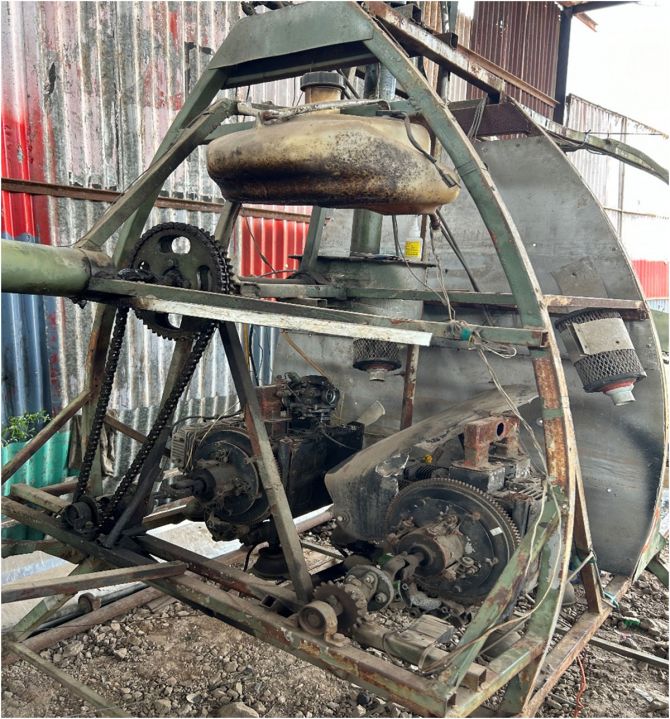

Pradip had a good business going repairing cars, tractors and two wheelers that had to be closed down when he joined the businessman at Satara. Now, without any income, he is in the process of setting up a garage where he plans to rebuild his business and carry on designing parts for his next machine.
We leave Pradip in his village, but not to his fate.
As we get going on the journey back home, we are filled with awe and admiration for this wonder man.
"What a guy! We must do something for him," I tell Sanjay.
"Yes of course, we must help him in every which way we can."
"I had expected an engine made from old car parts and was totally stumped seeing the way he has gone about making one on his own. He really knows his beans and has a fantastic understanding of aerodynamics, mechanics and all technology, much better than some engineers!"
"One thing is for sure... the man has talent, determination and tenacity. This must not be wasted and we must help him realise his cherished dream. Not for himself, but for our country too!"
Just giving him a plaque or some monetary award is not good enough. His contribution to technology and the atmanirbharta mission should not go waste!








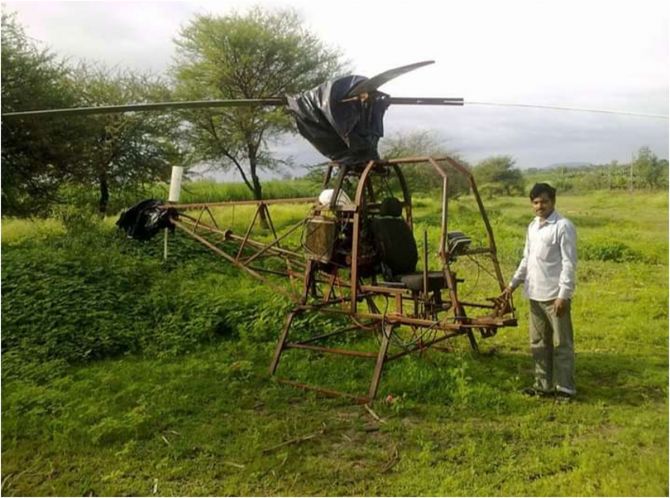
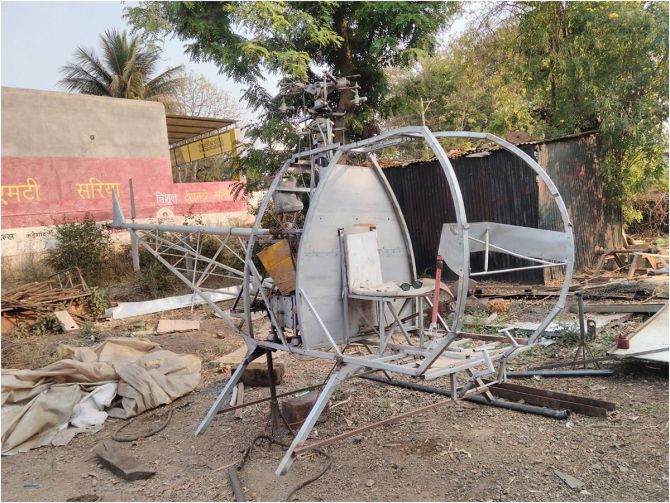
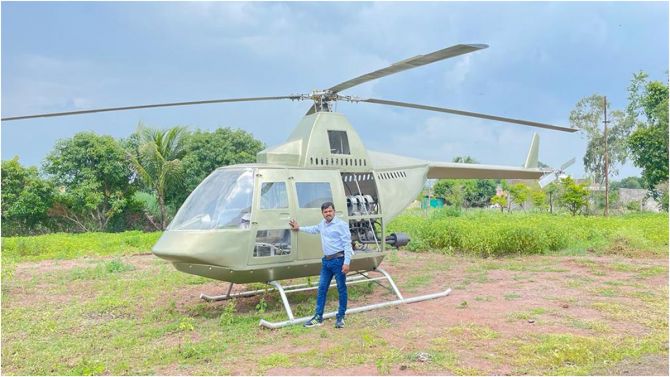






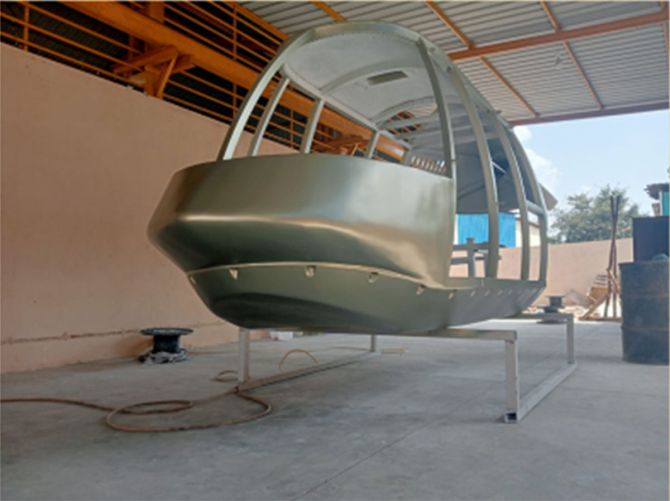




Combat helicopter pilot Air Commodore Nitin Sathe retired from the Indian Air Force in February 2020 after a distinguished 35 year career.
Feature Presentation: Ashish Narsale/Rediff.com


